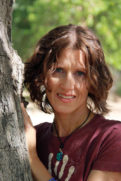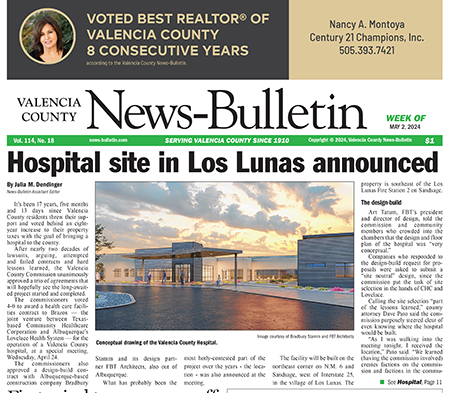Paw it Forward

Colleen Dougherty
In our actions toward people, animals and the planet, everything is connected.
“What we do to the web, we do to ourselves.” (Chief Seattle)
“Harm done to one is harm done to all.” (Restorative Justice principle)
“We are connected … not only in body, but in spirit.” (Rudolfo Anaya, Shaman Winter).
Nothing exists in a vacuum. Everything we do has a consequence, a trickle-down effect that’s so big most people don’t realize it, or if they do, they don’t want to think about it.
So, what does that have to do with euthanizing animals? In the August article, “Adopt versus Shop,” we learned the euthanasia rate at the Valencia County Shelter has hovered around 50 percent every month for the past year. The number of animals being brought into the shelter is averaging 500-700 every month. That means that every month, 250-350 animals are put to death, one by one, in the small euthanasia room at the shelter, by people who are your neighbors, family members and friends.
Sit with that for a moment, because it’s easy to turn away. Nobody wants to do it, but those who want to help animals in their community, take them in when they’re lost or unwanted, hopefully find them homes, or if they’re suffering from injuries or illness to ease their pain, know that in most cases euthanizing the overflow is part of the job.
It’s no secret that the trauma, depression and suicide rates of animal welfare workers are very high. Years ago, I myself lost one shelter coworker to suicide and another to addiction-all within six months. That’s certainly not something most people think about. The fact that they don’t think about it is the real problem because it allows the community to keep doing what it’s doing, even though people and animals are suffering.
Believing that an animal (or a person) has no feelings or that their feelings don’t matter, and that our own needs outweigh those of another living being — even if it means that being is going to suffer or die, is a dangerous mindset. We see it played out in our world every single day. It’s not only toxic, it’s contagious.
It starts with the person who’s just dropped off the family dog because the family is moving or surrendered another litter from their unspayed dog or cat, knowing but ignoring the fact that those beings may die before they’ve even driven back home.
Then it hits the shelter workers for whom overcrowded conditions, the constant drone of people’s excuses for surrendering up to 30 or more animals a day, and having to decide by day’s end which 15 of those will not live to see tomorrow, is a brutal, soul crushing reality.
You see, in order to behave in these ways we have to lose our capacity for empathy. We’re not supposed to lose that — it’s what makes us able to live amongst each other, create things and support life. It’s what makes us feel guilty when we’ve hurt someone and apologize, or better yet, not do something to hurt someone in the first place, but our brains are pretty amazing things.
Through a variety of cognitive tricks and thinking errors, we can justify almost any behavior, and sweep all kinds of uncomfortable facts and feelings right under the rug. Problem is, they don’t go away just because they’re out of sight. They come back to haunt us, and our continuous efforts to keep them hidden leak out in all sorts of nasty ways including violence, abuse, righteous indignation, passive aggression, apathy, inaction and, yes, even depression and anxiety.
It can happen to anyone. I recently learned that one in five Americans is on some type of psychotropic medication for anxiety, depression or PTSD. Some of those are animal welfare workers, some are all the rest of us. It’s all connected.
Valencia County faces many issues preventing a sustainable let alone regenerative animal welfare system, but clearly the current state of affairs is not only disheartening, it’s unhealthy, and not sustainable. In mental health we refer to something called “radical acceptance.” That’s when you stop pretending a problem doesn’t exist or being angry that it does, and instead of fighting with it, you turn all that energy into fuel to create real solutions.
Valencia County needs a new paradigm, not more Euthasol. That’ll take effort and cooperation from everyone — citizens, community leaders, animal health care practitioners, shelter personnel and rescue organizations. Because everything is connected, those efforts will help not only the animals, but the entire community.
(Colleen Dougherty’s history in animal welfare includes work in a veterinary clinic, shelters in Santa Fe and Albuquerque, and as a volunteer for the Valencia County Animal Shelter. She has been a speaker at the N.M. State Humane Conference on three occasions, presenting talks on caring for small mammals in the shelter setting, and compassion fatigue in animal welfare. She holds degrees in art and counseling therapy, and certificates in eco-psychology and feline massage therapy.)

















